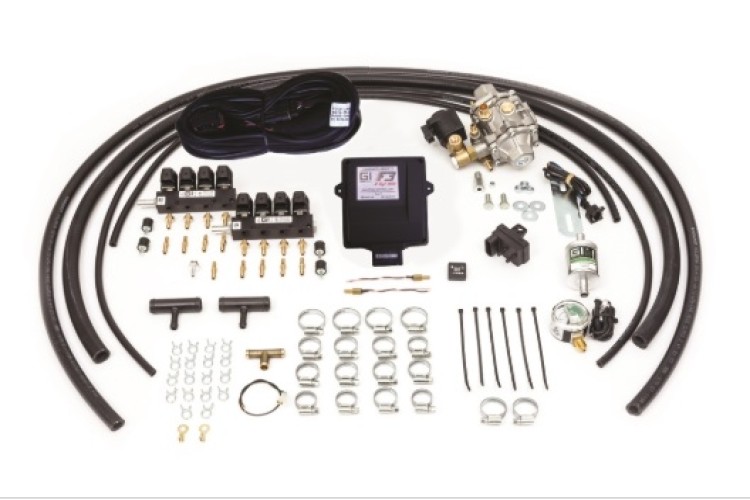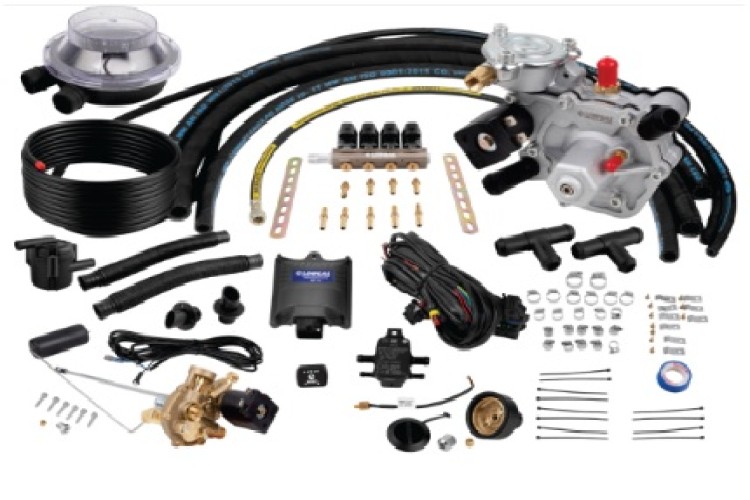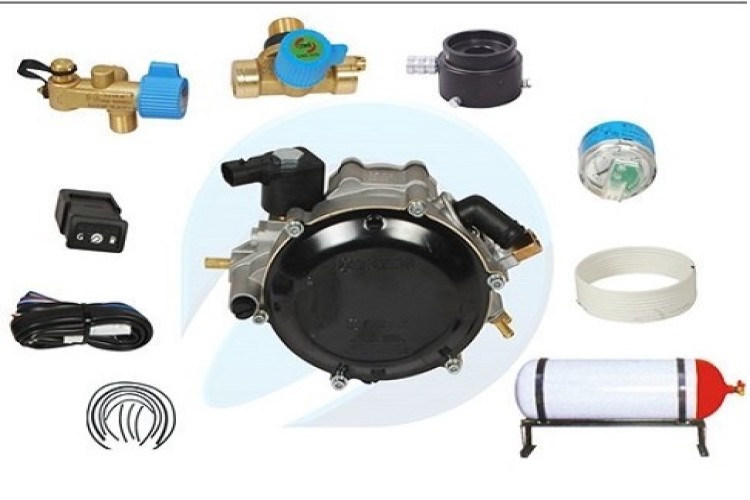
SEQUENTIAL CNG KIT
A Sequential CNG (Compressed Natural Gas) Conversion Kit is designed to allow a gasoline/petrol engine to run on CNG while maintaining optimal performance and emissions control. Unlike LPG, CNG is stored at high pressure (200–250 bar) and requires specific components. Below is a detailed list of components in a modern sequential CNG injection kit:
1. CNG Cylinder (Tank)
- High-pressure storage tank (Type 1, 2, 3, or 4).
- Usually made of steel (Type 1) or composite materials (Type 3/4 for lightweight).
- Rated for 200–250 bar working pressure.
2. CNG Cylinder Valve (Multivalve)
- Includes:
- Manual shut-off valve (emergency gas cutoff).
- Pressure relief device (PRD) (safety against overpressure).
- Fill and discharge ports.
- Thermal-activated valve (safety in case of fire).
3. High-Pressure CNG Regulator (1st Stage)
- Reduces pressure from 200–250 bar to 10–20 bar.
- Often includes a gas filter to remove impurities.
4. Low-Pressure CNG Regulator (2nd Stage)
- Further reduces pressure to near-atmospheric (suitable for injection).
- Uses engine coolant for heating (prevents freezing due to gas expansion).
5. CNG Electronic Control Unit (ECU)
- Manages sequential gas injection timing and duration.
- Interfaces with the petrol ECU (for bi-fuel operation).
- Adjusts for optimal air-fuel ratio (lambda feedback).
6. CNG Injectors & Rail
- Sequential gas injectors (mounted on a rail).
- Directly inject CNG into the intake manifold (similar to petrol injectors).
- Must handle methane (CH₄) without leakage.
7. Petrol Lock-Off Valve (Solenoid)
- Cuts off petrol supply when running on CNG.
- Prevents fuel mixing and backflow.
8. CNG Lock-Off Valve (Solenoid)
- Electrically controlled valve that shuts off CNG flow when:
- The engine is off.
- Running on petrol.
- In case of a leak or fault.
9. CNG Filling Valve (Refueling Receptacle)
- High-pressure connector for CNG refueling stations.
- Usually mounted near the petrol filler or bumper.
10. Pressure Sensors
- High-pressure sensor (monitors tank pressure).
- Low-pressure sensor (after the regulator, for ECU feedback).
11. Temperature Sensors
- Monitor gas temperature (prevent regulator freezing).
- Some systems include cylinder temperature sensors for safety.
12. Fuel Selection Switch
- Allows driver to switch between Petrol and CNG.
- Displays CNG level (via pressure approximation) and system status.
13. Gas/Air Mixer (Older Systems)
- (Only in non-sequential, mixer-type CNG kits)
- Mixes CNG with air before the throttle body (less precise than injection).
14. CNG Filter
- Removes oil, dust, and impurities from CNG before it enters the injectors.
- Usually placed before the low-pressure regulator.
15. Wiring Harness & Emulator
- Connects CNG ECU to the vehicle’s sensors (O2, MAP, RPM, etc.).
- Emulator (tricks petrol ECU into thinking petrol injectors are working).
A sequential CNG (Compressed Natural Gas) conversion kit is a modern and highly efficient system used to convert petrol-powered vehicles to run on CNG. This type of kit works similarly to electronic fuel injection systems in petrol engines, where CNG is injected into each cylinder individually and precisely, based on the engine's requirements. The system includes components such as an ECU (Electronic Control Unit), high-pressure injectors, a pressure regulator, sensors, and wiring harnesses. The ECU controls the timing and amount of gas injected, ensuring optimal combustion, better performance, and lower emissions. Sequential CNG kits provide smoother engine operation, improved fuel efficiency, and minimal power loss compared to traditional conversion kits. They are ideal for modern, fuel-injected vehicles and offer a more eco-friendly and cost-effective alternative to petrol.




